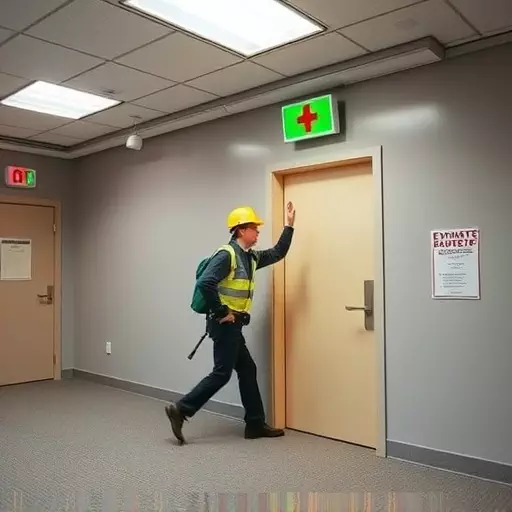Prioritizing worker safety through comprehensive emergency workplace safety training is vital for industrial businesses. This includes machine guarding education and regular workshops with practical exercises like evacuation drills and fire safety demonstrations. Such initiatives reduce accident risks, enhance crisis reaction capabilities, foster awareness, and promote a culture of responsibility, ultimately saving lives and assets by ensuring everyone knows their emergency protocols.
In today’s industrial landscape, ensuring worker safety through comprehensive machine guarding and emergency preparedness is paramount. This article explores the critical components of emergency workplace safety training, focusing on enhancing awareness and saving lives. We delve into key aspects such as workplace evacuation drills and fire safety training, essential elements for any business aiming to mitigate risks and foster a culture of safety. Understanding these fundamentals can revolutionize your safety protocols, making your workplace a safer, more prepared environment.
- Understanding the Importance of Machine Guarding Safety Training
- Key Components of Emergency Workplace Safety Training
- Implementing Effective Workplace Evacuation Drills and Fire Safety Training
Understanding the Importance of Machine Guarding Safety Training

In today’s industrial landscape, where machines play a pivotal role in production and manufacturing processes, ensuring worker safety around these equipment is paramount. Machine guarding safety training isn’t merely an additional course; it’s a crucial component of comprehensive emergency workplace safety training. This type of training equips employees with the knowledge to identify potential hazards, understand the purpose of machine guards, and respond appropriately during unexpected situations, such as machine malfunctions or accidents.
Regular workshops focused on machine guarding are essential for fostering a culture of fire safety awareness. They enable workers to participate in practical exercises, including hands-on demonstrations and workplace evacuation drills. By integrating these activities into fire safety training programs, employees become active contributors to maintaining a secure environment. Such proactive measures not only minimize the risk of accidents but also ensure that everyone knows what to do during an emergency, potentially saving lives and assets.
Key Components of Emergency Workplace Safety Training

In any work environment, especially high-risk industries, comprehensive emergency workplace safety training is paramount. This training should encompass various critical aspects to ensure every employee is prepared for potential hazards. Key components include regular workplace evacuation drills that simulate real-life scenarios, empowering workers with effective escape routes and assembly points. By practicing these drills, employees become familiar with emergency procedures, enhancing their ability to react quickly and calmly during an actual crisis.
Additionally, fire safety training is an integral part of comprehensive emergency preparedness. It involves teaching staff about fire hazards specific to their workplace, the proper use of fire extinguishers, and evacuation protocols in case of a fire outbreak. Equipping employees with these skills not only facilitates orderly evacuations but also fosters a culture of awareness and responsibility, ultimately contributing to a safer work environment.
Implementing Effective Workplace Evacuation Drills and Fire Safety Training

Regularly conducting comprehensive emergency workplace safety training, especially focused on workplace evacuation drills and fire safety training, is an indispensable component of any responsible organization’s health and safety program. These exercises aren’t just about adhering to legal obligations; they foster a culture of preparedness among employees, ensuring that everyone knows their role and responsibilities in the event of an emergency.
During these drills, workers are trained to quickly and efficiently evacuate buildings, facilitating orderly departures and minimizing panic. Similarly, fire safety training equips individuals with crucial skills like using fire extinguishers and navigating evacuation routes safely. By integrating these practices into daily routines, organizations can significantly reduce risks, enhance response times, and ultimately save lives.


